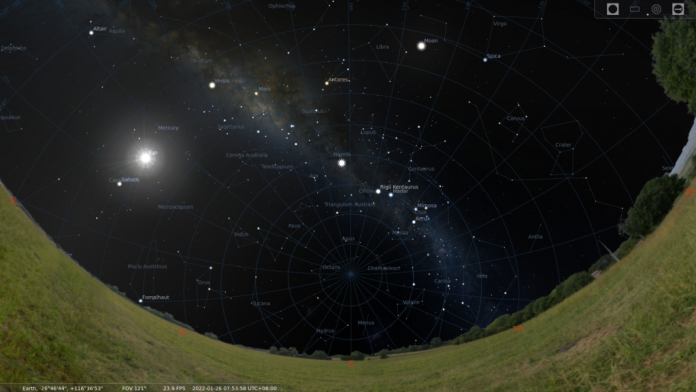
Australian scientists discover a “peculiar object” emitting a giant burst of energy three times an hour relatively close to Earth
At Curtin University, a team using the Murchison Widefield Array (MWA) telescope found an object releasing a giant burst of energy three times an hour. Led by Astrophysicist Dr Natasha Hurley-Walker, the team witnessed something really unusual.
Tyrone O’Doherty, the student who discovered the object, said: “It’s exciting that the source I identified last year has turned out to be such a peculiar object. The MWA’s wide field of view and extreme sensitivity are perfect for surveying the entire sky and detecting the unexpected.”
At just 4,000 light years from Earth, the object is essentially in the local neighbourhood.
Astronomers say that it is releasing a beam of radiation that crosses Earths’ line of sight – becoming one of the brightest radio sources in the sky for one minute.
Dr Natasha Hurley-Walker said: “This object was appearing and disappearing over a few hours during our observations. That was completely unexpected. It was kind of spooky for an astronomer because there’s nothing known in the sky that does that.”
Why is the object turning on and off?
The object is essentially turning on and off, sending out powerful, bold bursts of energy for one minute, then remaining quiet for twenty minutes. For scientists, the concept of celestial objects turning on and off is not new.
In fact, there is a name for them – transients.
Dr Gemma Anderson, co-author on this study, said: “When studying transients, you’re watching the death of a massive star or the activity of the remnants it leaves behind.”
There are two types of transient:
- ‘Slow transients’ which are like supernovae. They might appear over the course of a few days and disappear after a few months.
- ‘Fast transients’ which are like a type of neutron star called a pulsar. They flash on and off within milliseconds or seconds.
However, that doesn’t solve the mystery of this particular transient. Dr Anderson further emphasised that it was really unprecedented for an object to turn on just for one minute.
So, what could this object actually be?
Dr Hurley-Walker said the observations match a previously-unseen astrophysical object called an ‘ultra-long period magnetar’.
Scientists have always predicted various types of object, but lacked the moment of discovery. Often, the objects they predict are too distant or dark to be properly seen via Earth.
Alberto J Castro-Tirado, Institute for Astrophysics of Andalucía at the Spanish Research Council and not involved in this discovery, says a magnetar is a neuron star with magnetic fields 1,000 times stronger than those of other neutron stars.
They are more powerful than any other magnetic object in the universe.
Dr Anderson, who noted the weirdness of the on-off timing, also added that the object was definitely smaller than the Sun. But it emitted highly-polarised radio waves, suggesting that the object has an extremely strong magnetic field.
Professor Castro-Tirado said that “our sun pales in comparison to these bright, dense stars even when they aren’t erupting.”
Explaining ultra-long period magnetars, Dr Hurley-Walker further said: “It’s a type of slowly spinning neutron star that has been predicted to exist theoretically. But nobody expected to directly detect one like this because we didn’t expect them to be so bright.”










